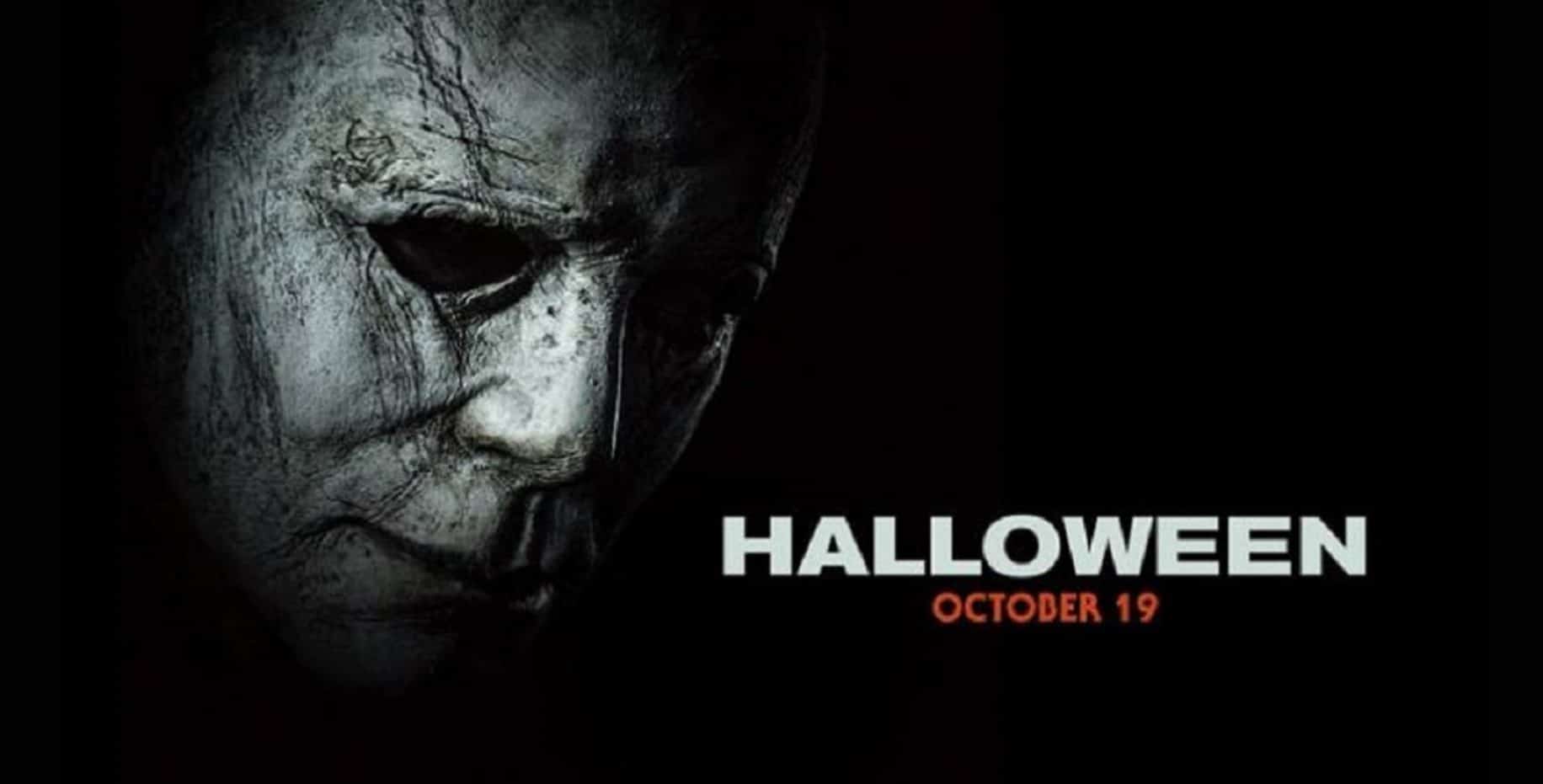
HALLOWEEN (2018)
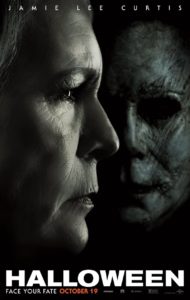
Starring: Jamie Lee Curtis, Judy Greer, Andi Matichak
Directed by: David Gordon Green
Written by: David Gordon Green, Danny McBride, Jeff Fradley
Characters by: John Carpenter, Debra Hill
Review by: Nick Schofield
The Halloween season may be over, but there’s still time to get your spook on.
Halloween, directed by David Gordon Green, brings us back to the world of Michael Myers. In coordination with John Carpenter–writer/director of the original Halloween (1978), Green and his co-writer/executive producer Danny McBride (yes, that Danny McBride) have created a gory, thrilling new chapter of this iconic horror franchise.
A direct sequel to the 1978 original, Halloween picks up 40 years after the Haddonfield massacre. Laurie Strode (Jamie Lee Curtis) lives isolated from her family behind the gates of her heavily-armored home. Michael, meanwhile, resides under lock and key at Smith’s Grove Rehabilitation Hospital. A pair of podcast journalists arrive and attempt to get Michael to speak about the massacre. To the podcasters’ dismay, they are unable to get both Michael and Laurie–who they later visit–to give up any new details about that night.
Upon departing from Smith’s Grove, Michael’s transport crashes, and he escapes. He retrieves his mask from the podcasters and is free once again to murder and terrorize the innocent. Laurie, who has spent the last 40 years preparing for this moment, attempts to corral her daughter, son-in-law, and granddaughter at her compound to keep them safe. After first pursuing Michael, Laurie then retreats to her home, ready to set her plan in motion to kill him once and for all. With the help of her daughter and granddaughter, Laurie is able to catch Michael in the trap she has spent the last four decades perfecting.
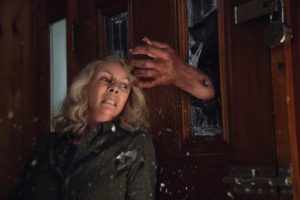
A Strange Team Deliver Delicious Horror
It’s an odd crew that took this film on, but their talent outshines their strange coagulation. Green’s directorial career include raunchy comedies like Pineapple Express and The Sitter, as well as critically-received dramas like Joe, Prince Avalanche, and Stronger. He and McBride–a mostly comedic actor by trade–have also been collaborators on series such as Eastbound & Down and Vice Principals. This was also Green’s first time directing a horror film, which makes the end result even more remarkable.
The cast is also an interesting mix of characters. While Curtis is an obvious grab for a Halloween film intended to be a direct follow-up, some casting choices were not so obvious but effective nonetheless. Judy Greer, an actress well-known for her iconic comedy roles, fills in the role of Laurie’s daughter in what first appears a very drole–but then mind-blowing–way (I’m trying to keep things vague to avoid too many spoilers).
Another interesting grab was Toby Huss in the role of Laurie’s son-in-law, Ray. To me, Huss is most infamous for his work in Down Periscope as the out-to-lunch electrical engineer Nitro. So, to see him in this type of role was jarring, to say the least. However, Huss fills the role well. He delivers an insecure, aloof father and husband whose fate the audience can feel from the moment he arrives on-screen.
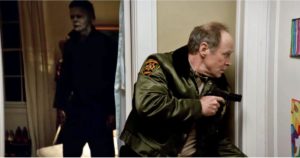
Will Patton–most remembered as Coach Bill Yoast in Remember the Titans–also gives a solid performance as Officer Hawkins, a sheriff who apparently was present in Haddonfield during the 1978 massacre. Hawkins was created for this new installment of the Halloween franchise, but Patton makes him blend into the world well.
Masterful Pacing, Suspense, and Cinematography
Halloween is incredibly crafted. Green pulled in great filmic elements and blended them to create a film with a unique tone, pace, and aesthetic. I could pull many different examples to defend my argument on this, but I’ll limit myself to two.
First, there’s Green’s use of blocking and composition (how the actors move in relation to the camera). Many times, the camera’s frame of view to create feelings of suspense and dread. These shots feel indicative of Hitchcock, Kubrick, the Coen brothers, and Fincher, to name a few. Sometimes, the camera is static to warn of impending danger; other times, the scenes build fear and suspense just up to the point of release, yet end up leaving the viewer’s anticipations unfulfilled as violence occurs off-screen. While some moments end up overdone, most scenes play out to the desired effect.
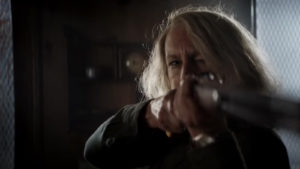
Second, there’s how Halloween’s plot and climax are constructed. Most of the early glances of Michael are fleeting at best. We do see him in his prison chains at the beginning, but we don’t see the front of his body or his face. Much like the shark in Jaws or the Raptors in Jurassic Park, the killer is seen in passing until they are at their most potent. The film leverages Spielbergian techniques for suspense, fleshing out the characters first while hinting at tension.
All of this builds to the climax of the film, which takes place entirely on Laurie’s property. The final acts of the film smack of the nervousness, excitement, and terror seen in many iconic film standoffs. You can easily draw parallels to the final defensive battle in Saving Private Ryan, the attack on Bond’s homestead in Skyfall, or the hotel standoff in No Country for Old Men. Hell, I might even argue there’s a Battle of Helm’s Deep feel to it. The same level of craft in those films is applied to the climax of Halloween, and the end result is a roller coaster ride you don’t want to get off of.
Slipping Up on Mental Illness…
Where Halloween went wrong for me was how it approached mental illness. It made a very noble effort to explore Laurie’s PTSD and the impact the 1978 massacre had on her life. She becomes a recluse constantly in emergency preparedness mode, waiting for Michael’s inevitable return. That trauma-influenced obsession led to Laurie’s alcoholism, distancing from her family, and other quality of life issues. Throughout the early stages of the film, there’s a mostly honest attempt to explore that part of Laurie’s life.
On the other side of the coin, the film’s portrayal of severe mental illness is not the best. Michael’s imprisonment besides a number of convicted, mentally ill patients, infers a false association between criminality and mental health. Michael’s hyper-antisocial personality disorder (most commonly referred to as psychopathy or sociopathy) is an extreme example of the condition. While he’s still considered an anomalous human in the Halloween universe, associating his danger–even in containment–with those of persons with learning disabilities, schizophrenia, mania, etc. isn’t productive to the real world dialogue on mental health.

Verdict:
Watch It! I really enjoyed this film, and–like I said–I’m not into horror all that much. This new Halloween installment is inventive in how it approaches the genre, has an absolutely thrilling climax, and will leave you on the edge of your seat. Go get your thrill on!

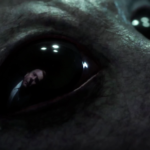
![[PODCAST] THE COMICS AGENDA:THE MANDALORIAN AND WONDER WOMAN REVIEW](https://geekd-out.com/wp-content/uploads/2017/11/comics-agenda-2-150x150.jpg)
